Audes Excellence 5 AMT Loudspeaker
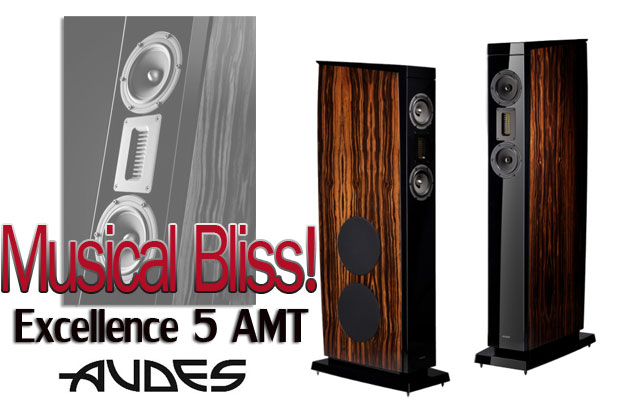
 I know a gentleman who is flush with both old and new money. His father was an entrepreneur who built a very successful marine supplies business which he took public about 10 years ago. He is now the CEO and majority owner of the listed company that has operations in many major shipping centers around the world including Shanghai, Yokohama, Dusseldorf and London. And what car does this obviously high net worth gentleman choose to drive? A fiery-red Ferrari powerhouse? An unobtainable 6-litre twin-turbo Pagani Huayra? Or even, God forbid, an eye-wateringly expensive Rolls Royce Solid Phantom Gold? Well, it turns out that the answer is none of the above. It is a lime-green Mini Cooper with a big union jack on its roof. When I asked him why he chose this car, he said that it was fuel economical and took him where he wanted to go. What more do you need from a car, he asked? Indeed, I replied, suitably chastised.
I know a gentleman who is flush with both old and new money. His father was an entrepreneur who built a very successful marine supplies business which he took public about 10 years ago. He is now the CEO and majority owner of the listed company that has operations in many major shipping centers around the world including Shanghai, Yokohama, Dusseldorf and London. And what car does this obviously high net worth gentleman choose to drive? A fiery-red Ferrari powerhouse? An unobtainable 6-litre twin-turbo Pagani Huayra? Or even, God forbid, an eye-wateringly expensive Rolls Royce Solid Phantom Gold? Well, it turns out that the answer is none of the above. It is a lime-green Mini Cooper with a big union jack on its roof. When I asked him why he chose this car, he said that it was fuel economical and took him where he wanted to go. What more do you need from a car, he asked? Indeed, I replied, suitably chastised.
When I think about the price of speakers nowadays, in particular the stratospheric levels some of them have reached, I can’t help but recall the words of this somewhat enlightened CEO. What more do you need from a pair of speakers besides musical pleasure? Anyone who replies “bragging rights” might as well stop reading, right now. Because what I am about to present to you is something that will bring you the musical goods of a big ticket loudspeaker, but for a fraction of the price.
A TRADITION OF EXCELLENCE
The tragedy of audiophiles is that we have been conditioned to believe that you only get the best if you are willing to pony up the green stuff. If you settle for a less expensive component, you are compromising on the sound. In most cases, that happens to be true. But sometimes, this trend can be bucked. When it is, we should be open-minded enough to recognize that product for its revolutionary qualities.
Audes, an Estonian company which has been the OEM for many other much better known (read: marketed) brands – the names of which cannot be revealed due to restrictive non-disclosure agreements – is no stranger to creating extremely high quality hifi components, including loudspeakers, amplifiers, and even transformers. It obviously has the means, the know-how, and the wherewithal to fulfill the demands of super high end speaker marques to gain their trust to build their speakers. This is actually not the first time Stereo Times is reviewing an Audes speaker – in fact, we have previously covered 3 different models from their stable; first up was their 111 Mini Monitor which was reviewed by Clement Perry in 2000, and which our Editor in Chief proclaimed to be such good value as to approach “hifi robbery” (here)! The next time we heard from Audes was two years later when Joe Lamano listened to their Blues floorstander (here) and concluded that they were not only very accurate and transparent, but also competitive with products costing twice or three times more. Joe had the good fortune to review yet a further product a year later, namely the Audes 535, a crossover floorstander designed to appeal not only to die-hard 2-channel enthusiasts but also the growing cinema/home-theatre market at the time (here). Once again, Joe thought very highly of the 535s and found it easy opine that they were an all-around top performer that competed “well with some of the larger and more well-known high-end speaker designs.” Given this illustrious background, I am now given the responsibility of carrying the torch almost 15 years later by reviewing one of their current flagship products, known a matter-of-factly as the Excellence 5 AMT.
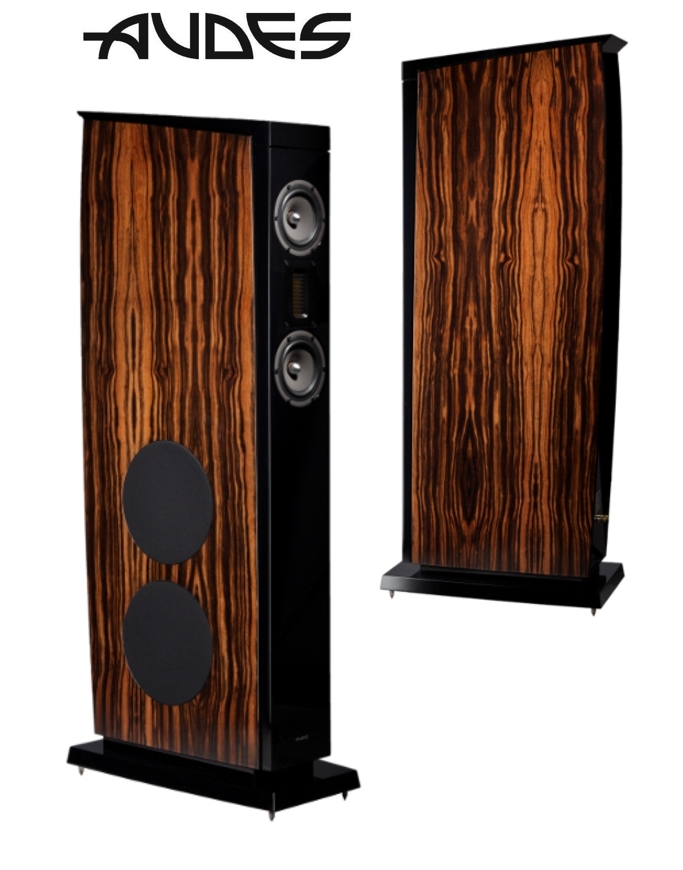
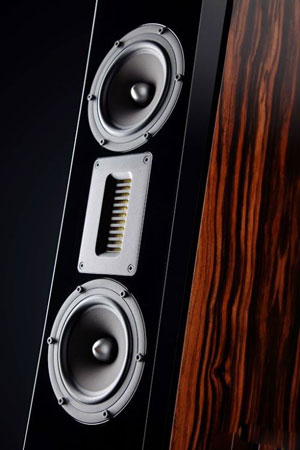 The Excellence 5 AMT floorstanders is an improved iteration of the Excellence 5, which simply employed a vanilla SEAS tweeter. It uses high end components such as F&T and Mundorf coupling capacitors as well as SEAS drivers for the mid-range. The tweeter is a version of the famous Air Motion Transformer tweeter (AMT) designed by Dr. Oskar Heil, hence the AMT in its nomenclature. The AMT tweeter’s frequency response is user-adjustable to a small degree via a knob located at the back of each speaker, and I will report on its efficacy later in this review. Dual 8” bass drivers are located on its sides, whereas the original Excellence 5’s only had one bass driver per side, with a subsidiary bass radiator. Its’ design is fairly conventional, with a 9” wide front baffle, but the cabinet itself is internally braced, which helps to prevent spurious cabinet resonances from coloring the sound of the drivers unnecessarily. The narrow baffle also minimizes the diffraction effects from the tweeters, in theory contributing to a less smeared treble. Nominal impedance of this speaker is 4 Ohms, and sensitivity is a claimed 92 dB/W/m.
The Excellence 5 AMT floorstanders is an improved iteration of the Excellence 5, which simply employed a vanilla SEAS tweeter. It uses high end components such as F&T and Mundorf coupling capacitors as well as SEAS drivers for the mid-range. The tweeter is a version of the famous Air Motion Transformer tweeter (AMT) designed by Dr. Oskar Heil, hence the AMT in its nomenclature. The AMT tweeter’s frequency response is user-adjustable to a small degree via a knob located at the back of each speaker, and I will report on its efficacy later in this review. Dual 8” bass drivers are located on its sides, whereas the original Excellence 5’s only had one bass driver per side, with a subsidiary bass radiator. Its’ design is fairly conventional, with a 9” wide front baffle, but the cabinet itself is internally braced, which helps to prevent spurious cabinet resonances from coloring the sound of the drivers unnecessarily. The narrow baffle also minimizes the diffraction effects from the tweeters, in theory contributing to a less smeared treble. Nominal impedance of this speaker is 4 Ohms, and sensitivity is a claimed 92 dB/W/m.
With all this technology, we are still talking about an asking price of $16,500.00 US dollars: a far cry from the ridiculous numbers being asked by other manufacturers for comparable products. If you see a pair of Excellence 5 AMTs in the flesh, you will not fail to be impressed with the fit and finish of the speaker. The deep lustre of its varnish, the high quality of the materials used (the wood grain on the side panels are to die for), and the obvious care and love that went into putting the entire thing together, just scream value. Honestly, if someone were to take the Excellence 5 AMTs and stick another more “famous” brand onto it, and double its price, many audiophiles will still think it is under-priced. But putting aside value for the moment, the truly important thing is how it performs. It would not be the first time that some clueless manufacturer has cobbled some high end components together and produced a lemon that can’t sing to save its life, even with a loaded pistol pointed at its binding posts. Audes may be an experienced manufacturer, but would the Excellence 5 AMT fall into this trap? Would it be too much of a good thing, given that the original Excellence 5s were not chopped liver to begin with?
In my listening sessions, the Excellence 5 AMTs were driven by a Rogue Audio ST-100 partnered with an EMT JPA66 Mk2 (Gold limited edition) preamplifier. The source was a Thales TTT compact turntable with a Simplicity II arm and an EMT JSD75 cartridge. Cables are Studio Connections Black Star interconnects.
SOUND QUALITY
Although my compatriots were suitably impressed with the other Audes products, I made sure to clear my mind of any undue influence when assessing the Excellence 5 AMTs. I started the listening sessions with an old movie soundtrack favourite, the main theme to “Raiders of the Lost Ark” (CBS 70205). The first thing I noticed immediately was how the Excellence 5 AMT managed to balance the sound with tremendous skill and finesse. The moment the needle hit the groove, I was greeted with a clear and open sound of that familiar riff, perhaps the only one that manages to rival the universally recognizable two-note ostinato from “Jaws.” The flow of the music was remarkably smooth, with no hint of congestion whatsoever, even though Williams’ orchestrations can sometimes tend slightly towards the thick and overblown. This testifies to the Audes speakers’ ability to clarify complex textures and handle dynamic swings from pp to ff without so much as breaking into a sweat. It was a taste of what I would eventually come to recognize as the primary strength of this speaker, namely the ability to unravel very complicated musical strands, yet not losing the big picture or the essential atmosphere or mood of the entire piece.
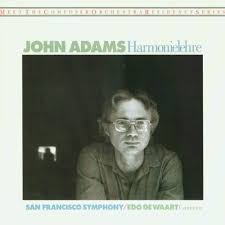 In an effort to suss out the Excellence 5 AMT’s true capabilities in preserving and presenting mood, I turned to what I would consider a classic torture track, John Adams’ The Anfortas Wound from his epic opus, “Harmonielehre“ (Nonesuch 9 795115-1 F) played by the San Francisco Symphony conducted by Edo De Waart. Through lesser speakers, the track may sound good, but will not be able to show the true gravitas of Adams’ momentous ideas. The Excellence 5 AMTs had no such issues. Despite the obvious shortcomings of the LP itself (a signed copy of the original pressing), I had no problems hearing past the surface noise to get fully immersed into the dark moodiness of Adams’ music. The atmosphere of this tour-de-force was greatly enhanced by the beauty of presentation from the Audes speakers, which managed to call forth all the drive and brio demanded by the music but without sacrificing its inner, tortured soul. Some way down this particular track, I decided that the strings needed a touch greater emphasis, and made some adjustments of the high frequency knob from the 12 PM position to around 2 PM. I am glad to report that this little boost did have the desired effect of giving the strings a little more incisiveness and bite, as well as bolstering the substance of woodwinds. It is nice to know that this knob is not simply a gimmick, but something that can truly provide worthwhile, albeit subtle, gains to suit your own listening tastes.
In an effort to suss out the Excellence 5 AMT’s true capabilities in preserving and presenting mood, I turned to what I would consider a classic torture track, John Adams’ The Anfortas Wound from his epic opus, “Harmonielehre“ (Nonesuch 9 795115-1 F) played by the San Francisco Symphony conducted by Edo De Waart. Through lesser speakers, the track may sound good, but will not be able to show the true gravitas of Adams’ momentous ideas. The Excellence 5 AMTs had no such issues. Despite the obvious shortcomings of the LP itself (a signed copy of the original pressing), I had no problems hearing past the surface noise to get fully immersed into the dark moodiness of Adams’ music. The atmosphere of this tour-de-force was greatly enhanced by the beauty of presentation from the Audes speakers, which managed to call forth all the drive and brio demanded by the music but without sacrificing its inner, tortured soul. Some way down this particular track, I decided that the strings needed a touch greater emphasis, and made some adjustments of the high frequency knob from the 12 PM position to around 2 PM. I am glad to report that this little boost did have the desired effect of giving the strings a little more incisiveness and bite, as well as bolstering the substance of woodwinds. It is nice to know that this knob is not simply a gimmick, but something that can truly provide worthwhile, albeit subtle, gains to suit your own listening tastes.
 Moving on to some Latin pop, I put on Gloria Estefan’s “Mi Tierra,” in particular the first track on Side 1, Con Los Anos Que Me Quedan. While I expected good sound, what I heard actually made me forget I was reviewing the speakers. If there is one track that can sell this product all by itself, it would be this one for me. I was utterly spellbound. Estefan’s voice was beautifully presented before me in all its naked glory. Even the acoustic guitar of Jorge Casas was absolutely lovely in its rich harmonics and unmitigated realism, and the string accompaniment was buttery smooth and oh so sweet. The Excellence 5 AMTs once again demonstrated their primary ability to carry an infectious beat, a result of their tremendous drive and pace. When proceedings became heated and busy, the speakers never lost a beat. They kick as cleanly as the band did, with every attack pure and without extraneous overhang. Then the trombones and trumpets came in and the whole house rocked. I never knew such fun from this track.
Moving on to some Latin pop, I put on Gloria Estefan’s “Mi Tierra,” in particular the first track on Side 1, Con Los Anos Que Me Quedan. While I expected good sound, what I heard actually made me forget I was reviewing the speakers. If there is one track that can sell this product all by itself, it would be this one for me. I was utterly spellbound. Estefan’s voice was beautifully presented before me in all its naked glory. Even the acoustic guitar of Jorge Casas was absolutely lovely in its rich harmonics and unmitigated realism, and the string accompaniment was buttery smooth and oh so sweet. The Excellence 5 AMTs once again demonstrated their primary ability to carry an infectious beat, a result of their tremendous drive and pace. When proceedings became heated and busy, the speakers never lost a beat. They kick as cleanly as the band did, with every attack pure and without extraneous overhang. Then the trombones and trumpets came in and the whole house rocked. I never knew such fun from this track.
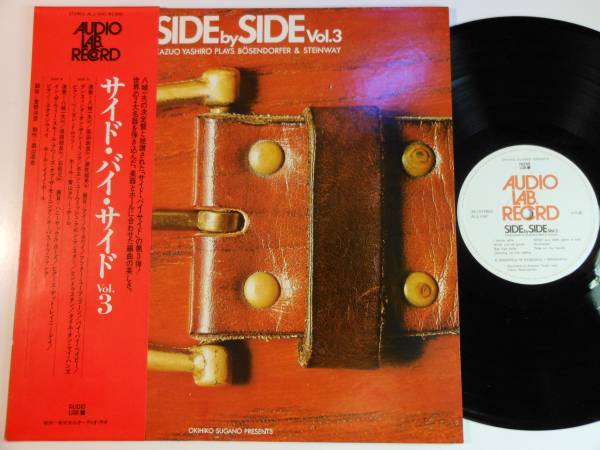 Having had so much success from the pop track, I thought I would try some jazz. This came in the form of “Honeysuckle Rose” from the LP “Side By Side Vol.3” (Audio Lab Record ALJ-1047), an effort from a very competent Japanese trio led by pianist Kazuo Yashiro. Before I played the track, I turned the AMT tweeter all the way to minimum just to see what would happen. Sure enough, I felt that at this setting, the piano sound was so muted that it was almost impossible to enjoy. Only by turning up the high frequency response again until it was almost maximum was I able to regain the piano’s original realism. Another observation that I was able to make during this particular track was that I could not detect any boxy coloration from the Excellence 5 AMTs. This, I felt, was testament to the extreme care and love shown to the construction and bracing of the cabinet itself and echoed my listening experiences with such other high end speakers as Magico and Wilson Audio. The Audes speakers can throw a soundstage as stable, wide and realistic as any of these, and save for a little splashiness on the cymbals on occasion, there really was very little that I could criticize in their presentation. At the expense of repeating myself for the umpteenth time, the way the speakers hold their calm demeanour when proceedings got busy is a quality that I very much admire.
Having had so much success from the pop track, I thought I would try some jazz. This came in the form of “Honeysuckle Rose” from the LP “Side By Side Vol.3” (Audio Lab Record ALJ-1047), an effort from a very competent Japanese trio led by pianist Kazuo Yashiro. Before I played the track, I turned the AMT tweeter all the way to minimum just to see what would happen. Sure enough, I felt that at this setting, the piano sound was so muted that it was almost impossible to enjoy. Only by turning up the high frequency response again until it was almost maximum was I able to regain the piano’s original realism. Another observation that I was able to make during this particular track was that I could not detect any boxy coloration from the Excellence 5 AMTs. This, I felt, was testament to the extreme care and love shown to the construction and bracing of the cabinet itself and echoed my listening experiences with such other high end speakers as Magico and Wilson Audio. The Audes speakers can throw a soundstage as stable, wide and realistic as any of these, and save for a little splashiness on the cymbals on occasion, there really was very little that I could criticize in their presentation. At the expense of repeating myself for the umpteenth time, the way the speakers hold their calm demeanour when proceedings got busy is a quality that I very much admire.
 It is clear that from my experience so far with this product, the Excellence 5 AMTs were living up to their name and their stablemates’ sterling reputation. More importantly, they are definitely not as coldly analytical or cerebral as some other more famous super high end speakers I have heard. While it may not be as detailed or open in ultimate terms compared with said speakers, it is capable of communicating much more of the spirit of the music. Part of the reason could be due to the way the Excellence 5 AMTs were deliberately voiced. When listening to jazz or rock, the twin bass drivers on the side of the speakers lent a not inconsiderable degree of lift to the lower frequencies, making instruments such as bass drums and bigger toms pop in the way you’d hear them in real life. For lovers of classical music, this extra lift or warmth in the 100Hz or so region could be a double-edged sword. While orchestral music can be thrilling, single cellos and double basses played in simple ensembles such as string quartets might suffer a little. For example, Michael Tippett’s “String Quartet No.3” played by the Lindsay Quartet (L’Oiseau-Lyre DLSO 10) had gobs of detail and verve overall, and it was clear that the Audes had the resolving powers to play with any of the big boys. I do not have any frequency response graphs at the time of writing, but from aural memory, the speakers’ little bump in the low mids changed the resonance of Bernard Gregor-Smith’s cello slightly, making it sound like it was made from a different grade of wood. Obviously, I do not know what his original cello sounds like, but with my own Voxativ Ampeggio speakers, that cello on the same record sounded fuller, rounder and less “cardboard-y”. At the end of the day, it is not a huge difference, and I might very well be hearing an overlap in the handoff between mid and bass drivers, or a speaker-room interaction issue.
It is clear that from my experience so far with this product, the Excellence 5 AMTs were living up to their name and their stablemates’ sterling reputation. More importantly, they are definitely not as coldly analytical or cerebral as some other more famous super high end speakers I have heard. While it may not be as detailed or open in ultimate terms compared with said speakers, it is capable of communicating much more of the spirit of the music. Part of the reason could be due to the way the Excellence 5 AMTs were deliberately voiced. When listening to jazz or rock, the twin bass drivers on the side of the speakers lent a not inconsiderable degree of lift to the lower frequencies, making instruments such as bass drums and bigger toms pop in the way you’d hear them in real life. For lovers of classical music, this extra lift or warmth in the 100Hz or so region could be a double-edged sword. While orchestral music can be thrilling, single cellos and double basses played in simple ensembles such as string quartets might suffer a little. For example, Michael Tippett’s “String Quartet No.3” played by the Lindsay Quartet (L’Oiseau-Lyre DLSO 10) had gobs of detail and verve overall, and it was clear that the Audes had the resolving powers to play with any of the big boys. I do not have any frequency response graphs at the time of writing, but from aural memory, the speakers’ little bump in the low mids changed the resonance of Bernard Gregor-Smith’s cello slightly, making it sound like it was made from a different grade of wood. Obviously, I do not know what his original cello sounds like, but with my own Voxativ Ampeggio speakers, that cello on the same record sounded fuller, rounder and less “cardboard-y”. At the end of the day, it is not a huge difference, and I might very well be hearing an overlap in the handoff between mid and bass drivers, or a speaker-room interaction issue.
CONCLUSION
At the end of my time with the Audes, I had no doubt that the Excellence 5 AMT is playing in the top leagues. I have no hesitation in recommending it to anyone, with whatever budget, looking for a state-of-the-art pair of speakers. It is beautifully made, with a level of fit and finish that any high end speaker would be proud to call its own. Sound-wise, apart from that slight quirk in the low mids, I had to keep reminding myself that I was not listening to a pair of super-$30k speakers. You might think that real estate tycoons and industrial magnates may not find it expensive enough to buy, but these are the same guys who have the keenest eye for a bargain. How do you think they got so rich in the first place? Certainly not by making bad financial decisions. Sure, the Excellence 5 AMTs may not have the cachet of an established big brand, but if you buy a pair, you will definitely not be accused of making a bad financial decision. On top of that, the musical pleasure that it will bring you will last you for the next few decades.
Remember what that CEO said; what more do you need?
Stephen Yan
Specifications:
Price: $16,500.00 USA
Nominal impedance: 4 Ω
Recommended amplifier power: 50 – 200 W
Frequency range: (±2 dB) 38 – 30000 Hz
Crossover frequency:150/3000 Hz
Sensitivity: (2,83 V/1 m) 92 dB
Speaker drivers: 8″ paper-based woofer. Designed & manufactured by AUDES, 5″ paper-based mid/woofer by SEAS, 1″ AMT tweeter
Dimensions: Base (mm), 1160 H x 209 W x 433 D, 291 W x 460 D
Weight:35 kg
Address: Pae str. 3a, Johvi, 41533, Estonia
Email: audes@audes.ee
Website: http://www.audes.ee
Stereo Times Masthead
Publisher/Founder
Clement Perry
Editor
Dave Thomas
Senior Editors
Frank Alles, Mike Girardi, Russell Lichter, Terry London, Moreno Mitchell, Paul Szabady, Bill Wells, Mike Wright, and Stephen Yan,
Current Contributors
David Abramson, Tim Barrall, Dave Allison, Ron Cook, Lewis Dardick, John Hoffman, Dan Secula, Don Shaulis, Greg Simmons, Eric Teh, Greg Voth, Richard Willie, Ed Van Winkle, Rob Dockery, Richard Doron, and Daveed Turek
Site Management Clement Perry
Ad Designer: Martin Perry






Be the first to comment on: Audes Excellence 5 AMT Loudspeaker